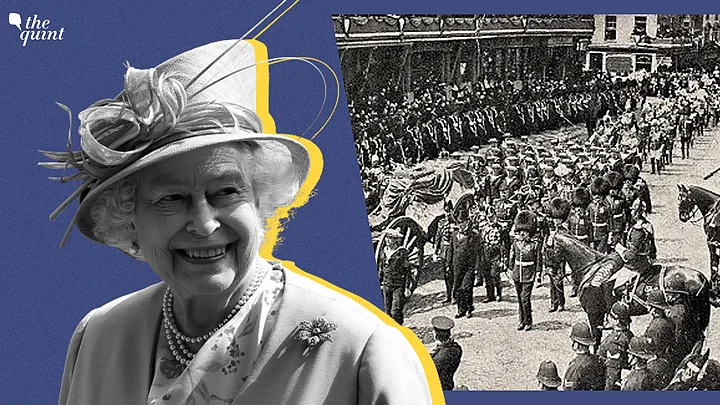The death of Queen Elizabeth II, after a long 70-year reign as the British head of state, has been a humbling reminder that even monarchs are mortal.
But even though kings and queens die just like the rest of us, they don’t die *exactly* like the rest of us. The death of Queen Elizabeth II is both a private family event and a widely reported international public spectacle.
For decades, meticulous plans have been in place for what will happen upon the death of the British monarch. Called ‘Operation London Bridge’, these plans involve a series of protocols involving the public announcement of the queen’s death, a public period of mourning, the arrangements for her royal state funeral, and the management of crowds gathering in London to pay her tribute.
In 1953, Queen Elizabeth II was inaugurated at Westminster Abbey within a coronation ceremony that proclaimed her as anointed and crowned by God. According to reports about Operation London Bridge, the end of her reign is to be bookended by her funeral ceremony in the very same church. To monarchists in Britain, the death of the queen is not simply the death of an individual but the transition and transformation of a public, national institution.
Lavish Royal Ceremonies to Mark Status
Since the early medieval period, when the earliest royal traditions were established in Britain, monarchs have marked their higher status using pomp and ceremony. British royal ceremonies are traditionally lavish affairs that show off the wealth of the monarch and celebrate their power, often incorporating Christian rituals and an idea that they rule with divine right.
Westminster Abbey, the royal church in which the queen was crowned and where her funeral will take place, is the traditional site for royal coronations, the location where dead royals lay in state, and 16 British monarchs are buried there.
Westminster Abbey was originally built by King Edgar in the tenth century, but in the eleventh century King Edward the Confessor rebuilt the church as a royal mausoleum for himself. This grand church, built in the fashionable Romanesque style, was finished only a week before Edward died in 1066.
The Bayeux Tapestry, an embroidery produced in the years after the king’s death, shows his coffin’s grand funeral procession along the streets of London. To Edward, like to Elizabeth, planning his funeral and ensuring it was a grand and religious occasion was a necessary part of exerting his influence as monarch.
A Very Public Funerary Procession Since 1066 AD
According to reports about Operation London Bridge, five days after her death Queen Elizabeth II’s coffin will also process through the streets, from Buckingham Palace towards Westminster Abbey. Her coffin will lie in state there for five days where the public can visit. During this time she will be present in the same church as King Edward, who made a similar journey a thousand years before her, until her funeral takes place on the tenth day and she is laid to rest at Windsor Castle.
Though the basic purpose of a royal funerary procession has not changed since Edward the Confessor’s funeral in 1066, much has changed in those thousand years. Compared to in the medieval period, the public are now afforded unprecedented access to the royal family.
Over the last few centuries especially, the rise of print media, the invention of radio, TV, and social media, means that the public are even more an audience for the goings on of the royal family.
How 'Access' Has Altered the British Royal Family's Influence
Whereas mourners in the past wishing to witness the monarch’s funerary procession or see their body would have to attend in person, the queen’s father George VI was the first to have his state funeral televised when he died in 1952, meaning the public could watch from home.
The coverage is also not limited to planned public mourning events, but also seeps into private moments. As soon as the news broke that the queen was unwell, international media had correspondents stationed outside Balmoral Castle, and viewers were able to watch live on TV as the queen’s family members disembarked from the plane on their way to visit her.
As the public gains more access to the British royal family, learning more and more details about their personal lives, while their human flaws and misdeeds are put under a microscope discussed on the world stage, ceremonies that serve to distance royals from us, demonstrate their power and wealth, and cement them as part of a state institution, become even more important to the continuation of monarchy.
It remains to be seen whether the British monarchy can continue in the same way without the monumental influence of its longest reigning monarch, under King Charles III. What is for certain is that the events following the death of Queen Elizabeth II will be implemented with the greatest care.
